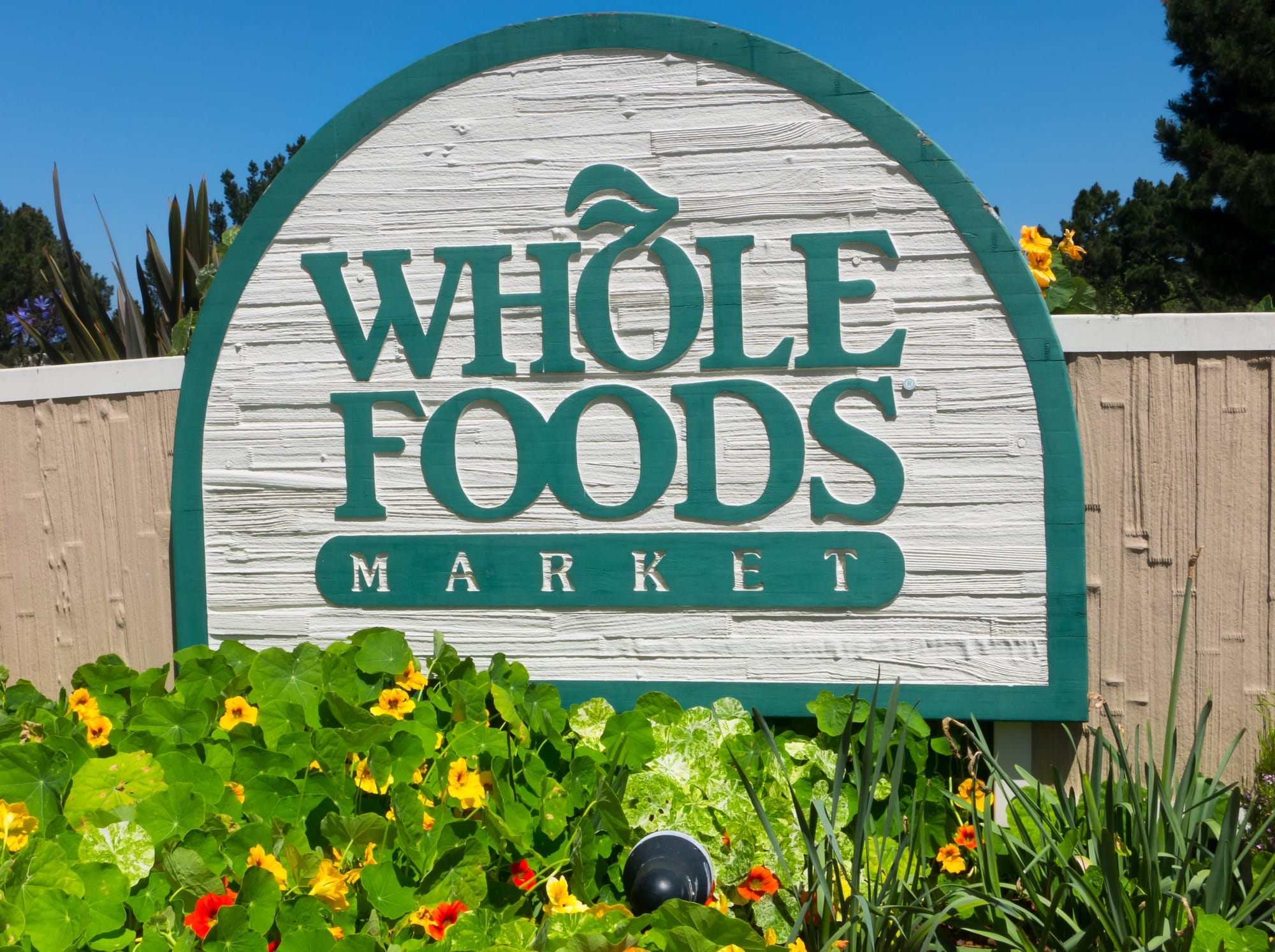Whole Foods Market, Inc. is a subsidiary of Amazon that sells organic products that do not contain any hydrogenated fats and artificial colors, preservatives, and flavors. It was established in 1980 as a supermarket chain and was acquired by Amazon in 2017. They have 400 stores in North America and also a few in the United Kingdom. Whole Foods has expanded to become multinational, and today, they are one of the most commercially successful health food sellers in the entirety of the United States. This Whole Foods SWOT Analysis will better help you understand the business and its actual standing in today’s world.
What are the strengths that Whole Foods can boast of?
High-Quality Standards
Whole Foods is a massive name in the organic food industry, due to which they have to ensure that their products are of the utmost quality. For reasons of quality assurance, they have some of the highest standards in the market. These standards make sure that all the products that they retail are in the best condition. Having high standards is a strength because you can use them to provide some of the best food items to your customers and, in return, gain their trust.
The company prohibits the use of certain items in its food, like any artificial ingredients. They also ban any sort of farming, ranching, or fishing activities that are not up to their standards. Many of the customers of Whole Foods belong to an educated and upper-middle class; they are often willing to pay higher prices too if it just ensures the quality of the food. This gives the brand a very big edge on profit earning.

Brand Image
Anyone who is interested in buying organic and healthy food knows the name Whole Foods. The company has managed to create such a name for itself. This big name provides the company with a brand image that is recognized and loved all around. This serves as an immense strength in the attraction and retention of customers; any customer would generally tend to go for a brand that is well-known.
This process works like a cycle. Its brand image helps Whole Foods stand out in comparison to its competitors hence enabling them to gain more and more customers. A lot of sales are generated in this process that secures the brand’s place in the market.
Motivated Employees
Whole Foods has developed an organizational culture that focuses on team building and employee productivity. Their culture is heavily transparent and evident in their retail stores. Because of this reason, the workforce of the brand tends to be highly motivated and dedicated towards their work. The strong culture also minimizes the spending on recruitment and training of new employees. In this way, Whole Foods can fully utilize the capacity of its workforce.
High Customer Satisfaction
Whole Foods has managed to obtain many positive reviews from its consumer base solely because of its dedication to providing the best and highest quality products for them. Whenever a company takes a consumer-centric approach, it always serves as a strength because it strengthens their customer base and helps in retaining them in the long run. Customers generally tend to be satisfied with Whole Foods, and that is always a beneficial factor.
Leading Brand
Whole Foods was one of the first organic brands in the country, and it started as a small local grocery store. By acquiring other grocery stores around the country, the brand began to grow slowly until Amazon acquired it. Today, Whole Foods is one of the leading brands of organic food retailers in the US. Their main competition is traditional local grocers, but they are maintaining a pretty good lead on the national front.
Diverse Range of Food Products
The specialization of Whole Foods is in producing dairy-free, vegan, and non-GMO foods. They offer a wide variety of organic eatables such as vegetables, meat, seafood, cheese, vitamins, and coffee, among others. They also sell other lifestyle products such as household goods and body care items.

What are the weaknesses that trouble Whole Foods?
Narrow Supplier Network
As noted previously, Whole Foods has many high standards for the products that it retails. For reasons of quality assurance, they have a very narrow network of suppliers. The number of suppliers that match the standards of Whole Foods is meager. This leads them to be heavily reliant on a handful of suppliers. The limited network also makes the expansion of Whole Foods operations much harder.
This can always turn into a weakness because relying on a few suppliers leaves a lot of room for damage. If anything goes wrong or unpredictably changes in this supply chain, the company will be left with a lot of repercussions to face. Whole Foods needs to expand its supplier network while ensuring that the quality does not get compromised to avoid succumbing to such situations.
Depending on One Market
The majority of Whole Foods’ stores, with the exception of very few, are in the American market, meaning that they depend on this one market for most of their revenue. Relying on one market leaves a company susceptible to sudden changes in the economy or other market conditions that can factor into the sales of the company. An excellent solution to this is always to branch out into other markets so that a company can stabilize itself. In this case, even if one of the markets undergoes a sudden disturbance, your cash inflow from other markets will balance out the situation for you.
Other brands like Walmart, which have more of an international presence, get multiple strategic advantages over Whole Foods in such situations.
General Perception
Many of the brand’s customers come from a relatively well-off financial background, yet complaints about the prices being too high still exist. The brand is often termed as ‘Whole Paycheck,’ meaning that people believe their whole paycheck is required to get something from Whole Foods. Impressions like this impact a brand’s image and make it undesirable within the consumer base; people start thinking that the brand is too expensive and hence, never approach it. This can affect the sales revenue that is usually brought in by the brand.

What are some of the opportunities that Whole Foods should take advantage of?
Global Expansion Opportunities
Whole Foods as a brand has the resources and revenue necessary for the expansion of their markets. We have already noted that the reliance on operations in the US market is a weakness. They can counter this weakness by expanding their operations in other international markets. This will present them with unique opportunities to become a global leader in organic food. If they start using this opportunity to the fullest, they can achieve even greater heights.
Competitive Pricing
Whole Foods can try to lower its prices a little bit; it will not have a significant effect on its quality. However, it will drive customers towards the brand and deal with the pricing accusations currently floating around. They can make their prices competitive with the other brands in the market.
Alliances
Amazon has adopted Whole Foods as a subsidiary. This deal has significantly proved beneficial for Whole Foods’ success. It increased the revenue and employee participation for the brand. Amazon is a big name globally, and getting acquired by it was a massive jackpot for Whole Foods.
Demand for Organic Products
Natural and organic products have an ever-increasing demand because people are constantly looking for healthier eating options. In recent times, there has also been more of a conversation regarding eating habits, and people have now become conscious of the food that they consume. This has led a greater influx of people to move towards organic options, and hence, this is an excellent opportunity for Whole Foods. It can market itself to any different demographics and greatly enhance its consumer base.
They can also start creating more original products under their own label, as is done by brands like Walmart or Target.
Social Media Marketing
Digital media provides a multitude of opportunities for a brand. Whole Foods can deploy many digital marketing strategies to increase engagement with its customers. This will help them attract more customers as well as engage with the older ones.
They can also look towards developing an app. They can use it to sell their products and also offer discounts and deals to people who sign up through the app. Social media is a prepared opportunity just waiting for anyone to exploit it. They can make total usage of this opportunity.

What are the threats lingering over Whole Foods?
Low-Cost Competition
The competitors that Whole Foods has offered the same products for relatively lower prices which makes them a constant threat. Competition is something that a business should strategically deal with, or it can become a big problem for any company. Whole Foods needs to adjust its price point so that it does not lower the quality but becomes more affordable for consumers to be attracted to the brand.
The competition keeps on increasing, which has given the company a run for its money. If the company fails to keep up with the low costs in the market, the customers might move to brands that do offer cheaper options.
Climate Change and Global Warming
Global warming can affect food production in many different ways. This can change the organic food products that Whole Foods offers. The company needs to be aware of these issues and be prepared to cater to them.
Global Recession
People already have some problems with the price range that Whole Foods sells its products at; the pandemic and subsequent lockdown make this situation even less favorable. In a time when people have to cut costs from a lot of different places, they might decide to do it from something they already feel is overpriced.
The pandemic also affected operations and production in a general sense, which is another thing that the company has to deal with. The real problem is that the situation is still uncertain, and no one can predict when it’s going to start getting better. So the company needs to start coming up with strategies that deal with things as they are right now.
Bad Publicity
In the past, Whole Foods has been under investigation on overcharging claims. However, the way that they handled this situation resulted in the company getting severe backlash which took a toll on its public image. For a big name like Whole Foods, it often sticks and drives away many customers if they acquire lousy publicity.
FDA Regulations
Compliance with the FDA regulations is necessary for any company to keep its operations running. It is not a significant threat but nevertheless is something that a company should focus on at all times because often, even a tiny error can lead to drastic impacts and stop production or retailing for a business.
Whole Foods SWOT Analysis: Conclusion
Bad publicity and backlash have been something in the journey of every big company. This Whole Foods SWOT Analysis elaborates the many strengths that Whole Foods has, the biggest one being its influence in the US Market. The two things Whole Foods really needs to focus on are better public relations and investment into foreign markets so that it can cover the weaknesses and threats that are currently in its way. Apart from that, Whole Foods has been a mega-retailer for many years, and they will definitely continue to be one for many to come.
You can use a SWOT Analysis to gauge the strengths, weaknesses, opportunities, and threats presented to any business. It can be an insightful tool in understanding the dynamics of a company.
To better understand how to do a SWOT Analysis, there are certain things you can take help from. These include a SWOT Analysis template, some examples, and a guide. Once you peruse through these things, you will better understand what a SWOT Analysis looks like.
Lastly, if you look at how to draw a SWOT Table, you will have learned an effortless way to present your SWOT analysis findings.









